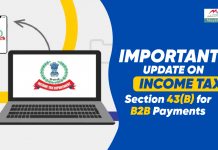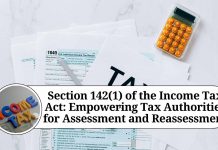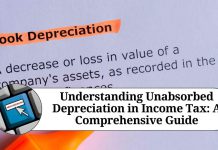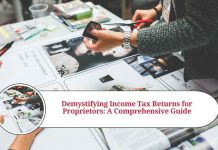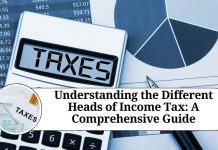The Income Tax Act contains provisions that allow for various deductions from the taxable income of an individual or a company. One such provision is Section 33, which deals with the deduction for repairs and maintenance expenses. This provision applies to all taxpayers who have incurred expenses on repairing and maintaining their assets used for business or profession. This article aims to provide a comprehensive understanding of Section 33 and how it can be used to reduce the tax liability of taxpayers.
What is Section 33 of the Income Tax Act?
Section 33 of the Income Tax Act allows taxpayers to deduct the expenses incurred on repairing and maintaining their assets used for business or profession from their taxable income. The assets could be tangible or intangible, and the expenses could include the cost of labor, materials, and any other expenses incurred to ensure that the assets remain in good working condition. It is important to note that the expenses claimed under Section 33 must be revenue expenses and not capital expenses.
Conditions for claiming deduction under Section 33:
To claim a deduction under Section 33, the following conditions must be met:
- The assets must be used for business or profession: The assets for which the repair and maintenance expenses are incurred must be used to earn income from the business or profession. The expenses incurred on assets used for personal purposes cannot be claimed under this section.
- The expenses must be revenue expenses: Only revenue expenses can be claimed under Section 33. Capital expenses, which are incurred to acquire or improve an asset, cannot be claimed under this section.
- The expenses must be wholly and exclusively for business purposes: The expenses claimed under Section 33 must be incurred wholly and exclusively for business purposes. Any expenses that are not related to the business or profession cannot be claimed under this section.
- The expenses must be incurred during the previous year: The expenses claimed under Section 33 must be incurred during the previous year, which is the financial year in which the income is earned.
Examples of expenses that can be claimed under Section 33:
- Repairs and maintenance of machinery and equipment used for business purposes.
- Expenses incurred on repairs and maintenance of buildings used for business purposes.
- Repairs and maintenance of vehicles used for business purposes.
- Expenses incurred on repairs and maintenance of patents, trademarks, copyrights, and other intangible assets used for business purposes.
- Expenses incurred on repairs and maintenance of computer hardware and software used for business purposes.
- Expenses incurred on repairs and maintenance of office equipment such as printers, copiers, and fax machines used for business purposes.
How to claim a deduction under Section 33:
To claim a deduction under Section 33, the taxpayer must furnish the following details in their income tax return:
- The nature of the repairs and maintenance expenses incurred during the previous year.
- The number of expenses incurred during the previous year.
- The asset for which the expenses were incurred.
- The date on which the expenses were incurred.
- The proof of expenses incurred, such as bills and receipts.
Conclusion:
Section 33 of the Income Tax Act is an important provision that allows taxpayers to claim deductions for the expenses incurred on repairs and maintenance of assets used for business or profession. By claiming a deduction under this section, taxpayers can reduce their tax liability and save money. However, it is important to ensure that the expenses claimed are revenue expenses and are wholly and exclusively for business purposes. Taxpayers must also maintain proper records and submit the necessary documents to claim a deduction under Section 33.
Read more useful content:
Frequently Asked Questions:
Q: What is Section 33 of the Income Tax Act?
A: Section 33 of the Income Tax Act deals with the carry forward and set off of losses.
Q: What kind of losses can be carried forward under Section 33?
A: Any loss incurred under the head “profits and gains of business or profession” can be carried forward under Section 33.
Q: What is the time limit for carrying forward losses under Section 33?
A: Losses can be carried forward for a maximum period of 8 assessment years immediately following the assessment year in which the loss was first incurred.
Q: Can losses be carried forward if the return of income is filed late?
A: Yes, losses can be carried forward even if the return of income is filed late, provided it is filed within the time limit specified in the Income Tax Act.
Q: Can losses be set off against any other head of income under Section 33?
A: No, losses under the head “profits and gains of business or profession” can only be set off against income under the same head.
Q: What is the procedure for carrying forward losses under Section 33?
A: The taxpayer needs to disclose the loss in the return of income and carry forward the loss in the prescribed form. The Income Tax Department will then verify the claim and allow the loss to be carried forward.
Q: Is there any limit on the number of losses that can be carried forward under Section 33?
A: No, there is no limit on the number of losses that can be carried forward under Section 33.
Q: Can losses be carried forward if the business or profession has been discontinued?
A: Yes, losses can be carried forward even if the business or profession has been discontinued, provided the return of income is filed within the time limit specified in the Income Tax Act.
Q: Can losses be set off against income earned from the speculative business?
A: No, losses under the head “profits and gains of business or profession” cannot be set off against income earned from speculative business.











